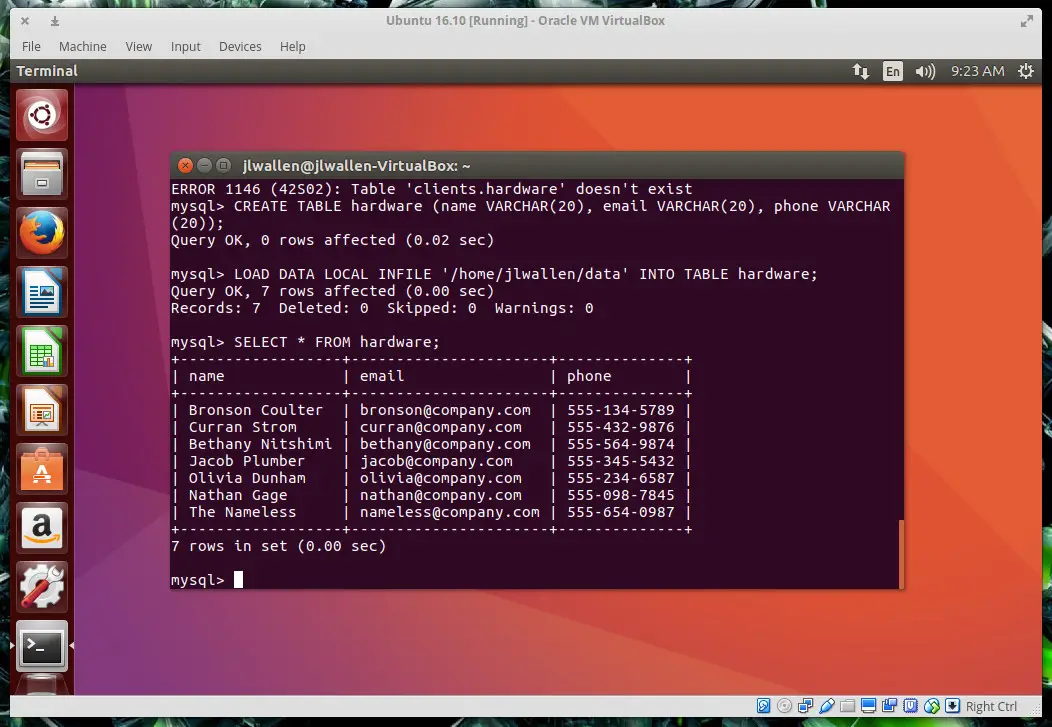Introduction to Database Management on Linux with MySQL and PostgreSQL

Database management is a critical aspect of modern computing, enabling the efficient storage, organization, and retrieval of data. Linux, a widely adopted operating system, offers robust support for database management with two prominent open-source databases: MySQL and PostgreSQL.

MySQL: A Relational Database Management System (RDBMS)

MySQL is a popular RDBMS that follows the SQL (Structured Query Language) standard. It offers:
- High performance: Optimized for rapid data retrieval and processing.
- Scalability: Capable of handling large datasets and high user concurrency.
- Versatility: Supports various data types, including numeric, character, and binary data.
- Ease of use: Provides a user-friendly interface and extensive documentation.
PostgreSQL: An Object-Relational Database Management System (ORDBMS)
PostgreSQL is an ORDBMS that extends the relational model with object-oriented features, enabling:
- Enhanced data modeling: Allows for complex data structures and relationships.
- Transaction support: Ensures data integrity during concurrent operations.
- Extensibility: Supports user-defined data types and functions.
- Advanced indexing: Optimizes queries for faster performance.
Choosing Between MySQL and PostgreSQL
The choice between MySQL and PostgreSQL depends on the specific requirements of the application:
- For simpler applications: MySQL is a suitable choice due to its ease of use and high performance.
- For complex data models: PostgreSQL is recommended for its advanced data modeling capabilities and enhanced transaction support.
- For mission-critical applications: PostgreSQL’s focus on data integrity and extensibility makes it a reliable choice.
In summary, database management on Linux with MySQL and PostgreSQL provides a robust foundation for storing and managing data effectively. MySQL excels in performance and simplicity, while PostgreSQL offers advanced features for complex data modeling and high availability. Understanding their capabilities and choosing the appropriate database is crucial for optimizing data management in Linux-based systems.## Introduction to Database Management on Linux with MySQL and PostgreSQL
Executive Summary
This comprehensive article provides an in-depth exploration of database management on Linux systems, utilizing the powerful open-source relational database management systems (RDBMS) MySQL and PostgreSQL. We delve into the fundamentals of database design, installation, configuration, and optimization, equipping readers with the knowledge and skills to effectively manage and optimize their databases. By leveraging the insights presented in this article, readers can gain a competitive advantage by harnessing the full potential of their data.
Introduction
In today’s data-driven world, organizations of all sizes rely on effective database management to store, organize, and retrieve critical information. Linux, with its inherent stability and security, provides an ideal platform for hosting robust and reliable database systems. This article examines the essential aspects of database management on Linux, focusing specifically on MySQL and PostgreSQL, two of the most widely adopted RDBMSs.
Database Concepts
1. Database Design
- Conceptual data modeling: Capturing the high-level requirements and relationships of data.
- Logical data modeling: Establishing the logical structure of the database, including tables, attributes, and constraints.
- Physical data modeling: Defining the physical implementation of the database, such as storage mechanisms and indexes.
2. Database Installation
- MySQL: Installing the MySQL server and client using package managers or from source.
- PostgreSQL: Installing the PostgreSQL server and client using package managers or from source.
- Configuration: Adjusting system settings, creating databases and users, and managing permissions.
3. Data Manipulation
- CRUD operations (Create, Read, Update, Delete): Inserting, retrieving, modifying, and deleting data from the database.
- Data types: Understanding and using various data types to represent different types of data.
- Transactions: Ensuring data consistency and integrity through atomic operations.
4. Database Optimization
- Indexing: Speeding up data retrieval by creating indexes on frequently queried columns.
- Query optimization: Rewriting queries to improve performance, including using EXPLAIN to analyze query plans.
- Database tuning: Adjusting server parameters, such as memory usage and connection limits, for optimal performance.
5. Backup and Recovery
- Backup strategies: Full backups, incremental backups, and archiving to protect data from loss.
- Recovery methods: Restoring databases from backups in case of failure or corruption.
- Replication: Mirroring data across multiple servers for redundancy and availability.
Conclusion
Effective database management on Linux is essential for organizations seeking to leverage the power of their data. By understanding the fundamentals of database design, installation, configuration, optimization, and backup and recovery, individuals and organizations can harness the full potential of MySQL and PostgreSQL. This article has provided comprehensive insights and practical guidance to equip readers with the knowledge and skills necessary to excel in database management, ensuring data integrity, accessibility, and reliability.
Keyword Phrase Tags:
- Database Management on Linux
- MySQL
- PostgreSQL
- Relational Database Management Systems (RDBMS)
- Database Optimization


great and helpfull!!
This tutorial is not useful for begginers
The installation of MySql is very easy
MySQL is better than PostgreSQL
Ironic text about DBA
A haha, this tutorial is very funny
Really liked the content, but little boring
i uderstand o litle
to few examples litle practic
nice its clier
no, itsn usefull for my work
not bad
nice but not very interesant